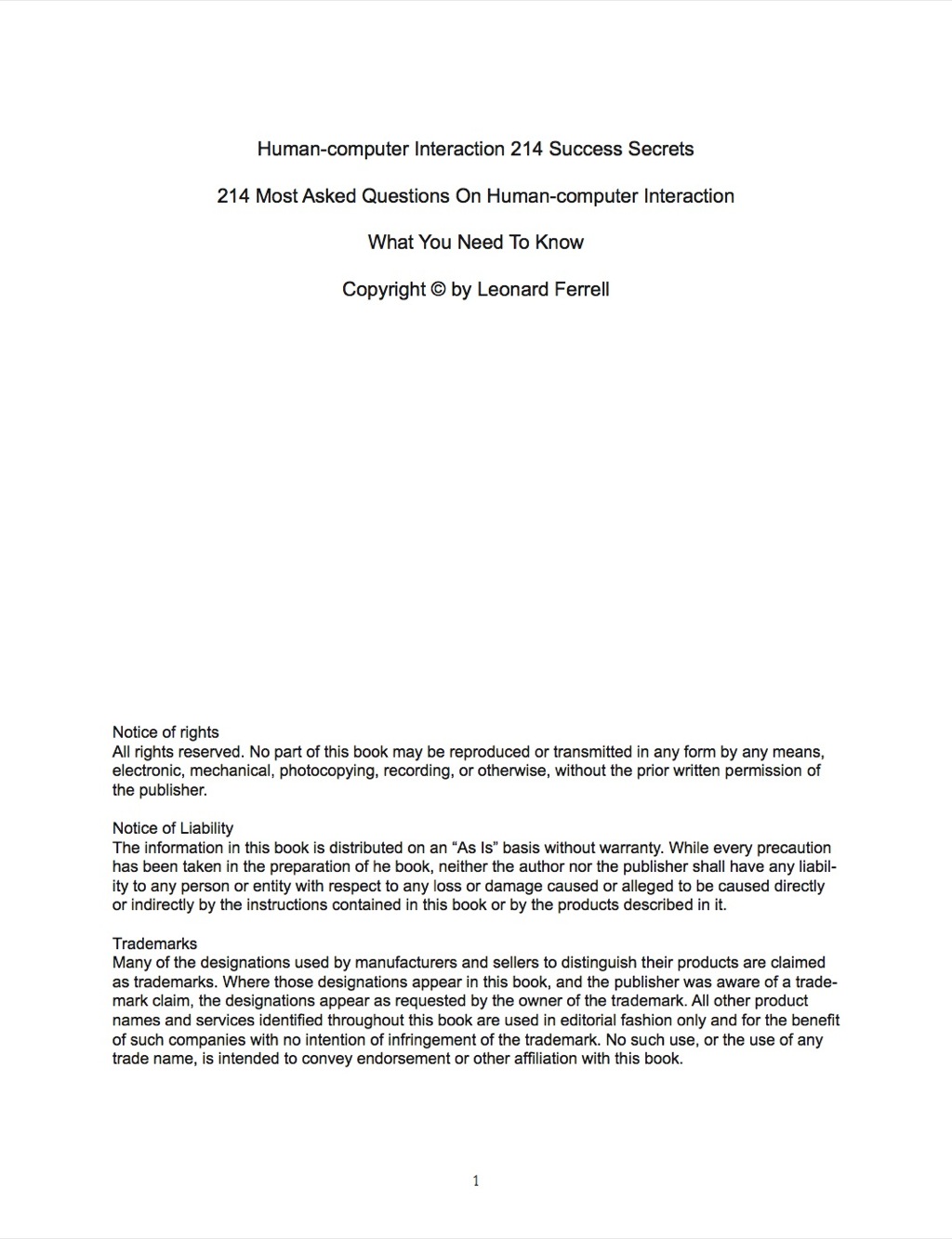Description
A Human-computer Interaction look that’s entirely new. There has never been a Human-computer Interaction Guide like this.
It contains 214 answers, much more than you can imagine; comprehensive answers and extensive details and references, with insights that have never before been offered in print. Get the information you need–fast! This all-embracing guide offers a thorough view of key knowledge and detailed insight. This Guide introduces what you want to know about Human-computer Interaction.
A quick look inside of some of the subjects covered: Cyborg, Jonathan Grudin, Spotfire – History, Ludic Interfaces, Live DVD – Technique, Ronald Baecker – Summary of Research Interests, Sustainable design – Applications, Mind uploading in fiction – Early and particularly important examples, Usability – Professional development, Cut and paste, Architectural theory – Contemporary, Wikis, Computing Computer science, Human–computer interaction – Scientific conferences, Human computer interaction, Computer user satisfaction, Stuart K. Card – Work, Traffic sign design – Interaction design and traffic signs, James G. March – Bibliography: Selected Articles, Brad Myers, Carnegie Mellon University Research, Auto-complete, Embodied agent – Embodied conversational agents, Pervasive network – Core concepts, Digital omnivore, Video game crash of 1977 – Origins of the computer game (1940–2014), Design rationale – Argumentation-based models, Activity recognition, Spatial visualization ability – Human-computer interaction, Ergonomic – Cognitive ergonomics, User experience design – Human-Computer Interaction, Concept learning – Bayesian theories of concept learning, Outline of human–computer interaction – General human–computer interaction concepts, Real time disk encryption, Wizard of Oz experiment, Keyboard (computing) – History, Embodied cognitive science – General principles of intelligent behavior, and much more…






